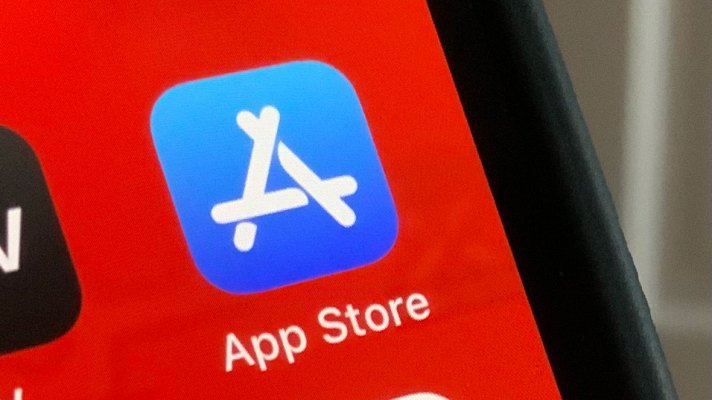[ad_1]
A new estimate from app intelligence firm Sensor Tower predicts that nearly 3,000 semi-active apps, if not more, could be removed from the App Store in the latest campaign designed to remove apps that are no longer updates by their developers.
News that Apple is doing another cleanup of its App Store emerged this weekend, shortly after Google’s recent announcement that its Play Store will begin blocking downloads of outdated apps.
Over the past few days, several iOS developers have taken to social media to report receiving notices from Apple that their old apps will be removed from sale within 30 days if no updates are submitted.
After Sensor Tower’s analysis of apps that had at least 10,000 installs in 2022, it discovered that some 2,966 apps and games could be removed in Apple’s latest purge because they were updated to the last time before or during 2018. But based on anecdotal reports from developers, some had said their apps were updated more recently, but still received a warning from Apple. This indicates that the actual number of affected apps could be even higher.
Apple, unfortunately, was not specific in its communication with the developers. He only informed them that if their apps had not been updated for a “significant time”, they would be deleted. Apple did not respond to requests for comment on the issue.
Apple has a habit of cleaning its App Store at regular intervals.
Typically, these App Store swipes are designed with the needs of consumers in mind, not necessarily developers. When consumers are looking for apps and games to download, they want to be sure they’re installing something that actually works, has been optimized to fit their device’s screen, and is up to date with all the improvements of recent security. Many apps on the App Store do not meet these requirements after developers have abandoned them. These apps can also target outdated APIs, which could render them non-functional. It’s a bad end-user experience, and ultimately Apple wants to avoid it.
But complaints from affected developers indicate that an app’s functionality isn’t always an issue.
Rather, they view their application as a finished project that does not necessarily need to be continuously updated, similar to a work of art. And some of the apps and games caught in the purge are still usable and playable, they claim.
According to one developer, Simon Barker, its Tap Timer app, now ready for removal, receives no crash reports and still sees downloads. He admits the app doesn’t “set the world on fire”, but it works and differentiates itself from other timer apps on the market. The app would require recoding to meet Apple’s request, and Barker admits he didn’t follow Swift. Meanwhile, he points out that another of his apps has more downloads but did not receive a similar warning. He says these kinds of anti-developer policies are the reason he stopped developing for the App Store.
Another developer, Simen Gjermundsenreflected that complaint on Twitter, also noting that its children’s game, Motivoto, is still “fully functional” and calls the policy an “unfair barrier for indie developers.”
iOS Developer and App Store Reviewer Kosta Eleftheriou also suggested that the policy might be applied unevenly.
He said a version of his keyboard app designed for visually impaired users was removed from the App Store because it was outdated, but the Pocket God game remains online even though it hasn’t been updated. since seven years. (However, it’s not clear that Pocket God would be safe from a swipe — its Twitter account is no longer active and its website has been shut down. It’s possible the developers also received a warning. We should know in about… 30 days.)
While application may be spotty or sporadic, this shouldn’t come as a complete surprise. Apple notifies developers in advance that consistent app updates are part of the App Store Business Agreement. In Apple’s App Store Review Guidelines (Section 2.5.1), the company tells developers that apps should only use public APIs and that developers should keep “apps up-to-date.” Specifically, the guidelines ask developers to “Be sure to phase out any outdated features, frameworks, or technologies that will no longer be supported in future releases of an operating system.”
While Apple cannot enforce this directive for periods of time, it has always done so at a semi-regular cadence over the years, including with earlier larger “sweeps”.
Several years ago, for example, Apple phased out support for 32-bit apps and then removed those apps from App Store searches. In 2016, it also targeted outdated apps in a similar App Store purge. After a major crackdown on outdated apps, spam, and cloned apps in 2017, Apple’s App Store even shrunk for the first time. And after banning apps built using templates and app builder services, Apple was called out for potential harm to small businesses and nonprofits that lacked the expertise or internal funds to build custom apps from scratch. Apple later adapted this policy following developer backlash and a congressional investigation.
In previous years, Apple had notified developers exactly when a purge would begin, as this cached support page from the 2016 sweep indicates. Today, that same webpage exists simply to notify developers of what they have to do when they receive an email indicating that App Store swipes are now a routine function for the App Store.
If anything, what has changed may not be the App Store policy itself, but rather the fact that developers feel empowered to talk about aspects of the App’s operation. Store they don’t like – especially now that Apple’s inattention to developer complaints may inspire new regulations.
Apple itself has fought particularly hard against several suggested new laws that would require it to allow alternative app stores on iOS like it does on Mac, saying it puts user privacy and security at risk. But if such a requirement materializes, it opens up the possibility for developers to host a kind of “archive” app store showcasing their best work from years past – but which Apple had started from its own marketplace. ‘apps. Such a store could give developers’ work an extended lifespan, even after technologies have advanced and screen sizes have changed.
[ad_2]
Source link




